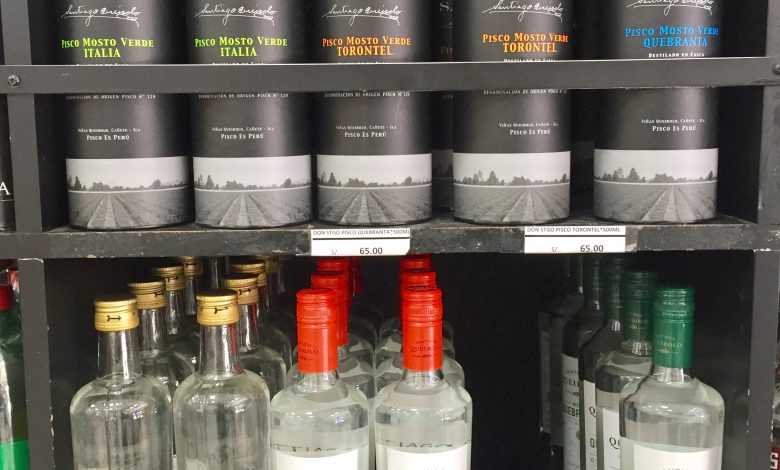Peru’s Pisco, Distinctive and Unique

The distiller known ’round the world for Peru’s Pisco Porton, Johnny Shuler, is from originally Switzerland, according to his license. He still claims he is fully Peruvian.With the national drink, Pisco, growing under his watchful eye, his nationalism is noteworthy.
Since both Peru and Chile claiming birthrights to the beverage, it is interesting to see the faces and places that are taking part in this hotly debated argument of where pisco was created and who has the authority to define the drink.
The first grapevine comes to Peru at the end of the first half of the 16th century from the Canary Isles, brought by the Marques Francisco de Caravantes. Chroniclers of the epoch indicate that was in the estate Marcahuasi, in the Cuzco, where the first vinification took place in South America
The vineyards flourished, and wine was made for the use in Holy Service, or for the church. The Spanish imported Orujo, made from pomace (stems, skins, pulp, and seeds) which was sold in Peru. The drink was created as a way to avoid wine embargoes forced by Spain, who was beginning to feel threatened by the wine production in the New World. They forbid Peruvian wine from being sold in Panama or Guatemala.
The embargo and the abundance of grapes available at local vineyards led to the idea to set up stills and began to distil their own ‘hard’ alcohol, up to 96 ‘proof’. This was called “pisco”

What makes pisco, pisco? There are questions about the origin of the word ‘pisco’. The area of Peru where ‘Pisko’ pots were created and the port from which they were sent out into the world, filled with wine, all bore the appellation “Pisco”.
However, it is argued in Chile that “pisco” is simply a nam for ‘mud carrier’. The Peruvians trace the word ‘pish qu” to the Quechua for birds. Peru also traces “pisco” to the name of the port and the name of the valley carrying them. This puts “pisco in the same category as Cognac or Champagne or Tequilla – where the place of origination, as a formal Denomination of Origin would limit what can be called “Pisco”.
The Chileans, of course, have created an alternative history to justify their pre-emptive use of the name pisco. But, more than simply a name, there is a difference between Peruvian Pisco and Chilean Pisco. The Peruvian spirit uses a simple still – like those used to make Cognac in France. Johnny Shuler compares the distillation of Pisco Porton to that of Cognac. Pisco is made from wine – like cognac. which is also distilled from wine (not the pomace), but aged in oak barrels. He says, “your Cognac is made by oak, my pisco is made by god!” Pisco Porton uses metal containers that are non-reactive and allow the flavor of the grapes to come through.
In Peru, pisco is distilled once and that creates a spirit that is poured directly into the bottles and sold. The Chilean spirit is double distilled, using the ‘heart’ of the distillation process to create a brandy that is much different than the Peruvian one in flavor. This creates different spirits with different characteristics, meaning there should be a different name for each.
Loret de Mola, a US importer and owner of Bar Sol, has another theory. Pisco Elqui was named such in 1936. It is the place where Chilean pisco is made. Why not call their spirit “Elqui? Loret de Mola asks, “What happened in 1933? The repeal of Prohibition. The American market—the largest consumer market—opened its doors for being to bring liquor and wine back.
“At that time, Chile was already producing good quality wines and they wanted to piggyback their brandy with their shipments of wine. They started to call it pisco because commercially it would be a reputable name to be distinguished by. Peru already had [pisco].”
The fight over the name will be ongoing, until one or the other wins in international tribunals and is able to impose its Denomination of Origin and claim the name alone. Like Johnny Schuler, the origin is less important than the nature and quality of the beverage produced. Peruvian pisco takes honors. It is distinctive, subtle, and wonderful.




